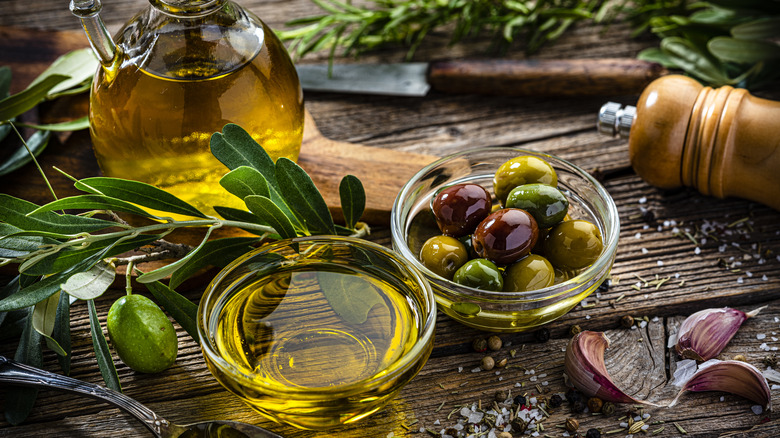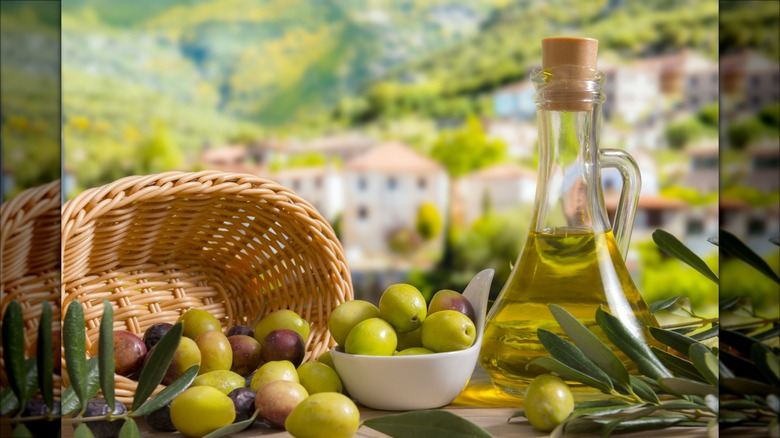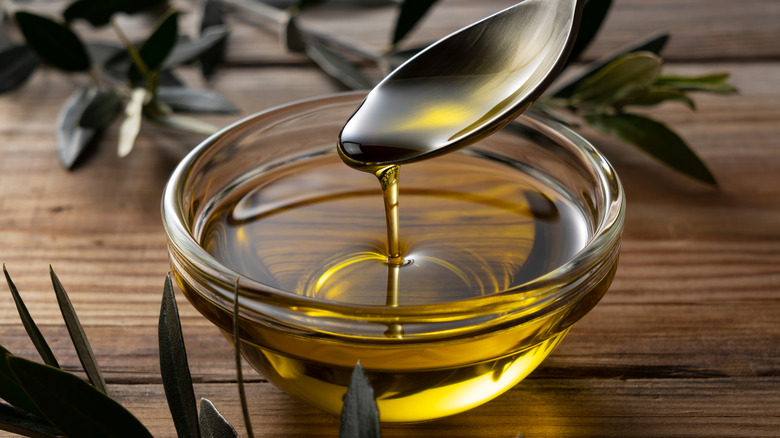Which Country Produces Most Of The World's Olive Oil?
Olive oil is a must-have culinary tool: you can use it to fry eggs and grilled cheese sandwiches, or simply drizzle it over pasta or crusty bread. Additionally, olive oil is helpful in a number of other applications outside of the kitchen. It works as a moisturizer, a hair oil, it can help you remove dust, and even give your stainless steel appliances a shine! There's quite a market for olive oil, so it's no surprise that a number of countries produce millions of tons of it every year. When it comes to the overall volume of olive oil produced, one country far surpasses all the others.
Greece consumes more olive oil than any other country, with each citizen using an average of just over five gallons a year. But surprisingly, Greece is not the biggest producer of olive oil; that honor goes to Spain. According to a number of recent reports, Spain produced over 5.9 million tons of olive oil in 2023, which is more than double the runner-up in this category, Italy.
Spain is the biggest producer of olive oil
Olives have been a part of Spanish cuisine since the crop was brought over by the Greeks thousands of years ago. The country has been producing oil since at least the era of the Roman Empire. Spain's long summers and mild winters are perfect for olive trees to thrive, and every year, around 350 million olive trees are harvested in the country. Olive oil is also produced all over Spain — by family-owned farms and commercial suppliers alike — but certain regions are more popular for the crop than others. Andalusia, for instance, a region in southern Spain, produces more olive oil than anywhere else on the planet.
Due to elements like the harvesting process, olive quality, and the environment, olive oil is different depending on where it's produced. Spanish olive oil has a brighter yellow hue compared to other varieties, as well as a fruitier taste. An olive oil's qualities also vary from region to region within Spain depending on what kind of olives are used. For example, Andalusian olive oil uses hojiblanca olives, which give the oil a grassy taste, while olive oils made in central Spain using Cornicabra olives are more bitter.
Spain's olive oil is very high-quality
Not only is Spanish olive oil the most abundant variety in the world, but it's also responsible for some of the most acclaimed. In 2022, an Andalusian olive oil called Rincon de la Subbetica was the top pick in the World's Best Olive Oil competition based on how it ranked in a number of other competitions around the globe. As a matter of fact, six out of the ten best olive oils that year were from Spain (the other four were from Italy). Because there is such a large supply of Spanish olive oil, it is not overly expensive; in some places, it sells for as little as about fifty cents an ounce.
Food is a vital part of Spanish culture, and olive oil is treated like the "liquid gold" the philosopher Homer once described it to be. To best enjoy the earthy complexities of this commodity, pour some into a small dish and sprinkle on a hint of salt. Then, use it as a dip for some quality toast. Olive oil also makes a good addition to charcuterie boards to enhance the flavors of cheese, crackers, or pieces of meat. Pour some over salad, or even over a bowl of ice cream to make the most of one of Spain's most beloved exports.


